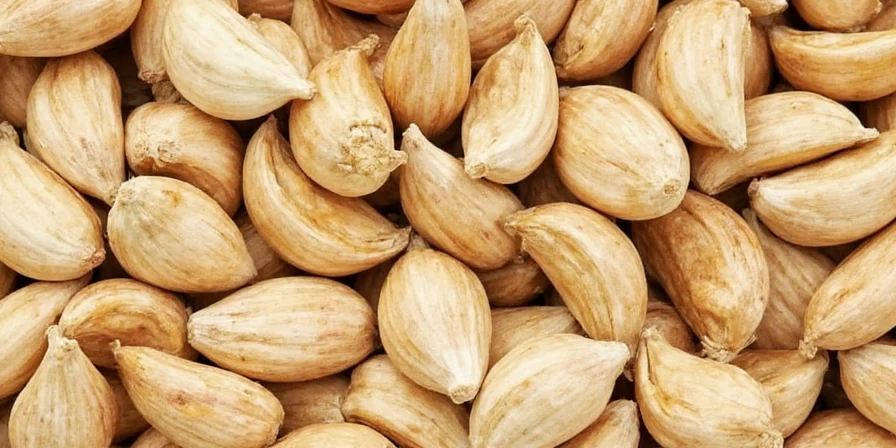For home cooks and culinary enthusiasts seeking to elevate everyday meals, dried garlic is a versatile pantry staple. This guide delivers precise techniques to maximize flavor while avoiding common pitfalls—ensuring your dishes achieve balanced, professional-quality results without overpowering bitterness or wasted ingredients.
Why Dried Garlic Deserves Strategic Use in Your Kitchen
- Shelf-Stable Versatility: Maintains consistent flavor for months, ideal for quick weeknight meals when fresh garlic isn't available.
- Controlled Flavor Integration: Provides predictable garlic intensity without the variability of fresh cloves.
- Texture Preservation: Won't disintegrate in long-cooked sauces or disrupt delicate batters like fresh garlic sometimes does.
Comparative Analysis of Dried Garlic Formats
| Type | Advantages | Limitations |
|---|---|---|
| Garlic Powder | Instant dispersion; ideal for rubs and spice blends | Overpowering if exceeding 1/8 tsp per serving |
| Minced Dried Garlic | Retains visible texture; mimics fresh garlic appearance | Requires 10-15 minute rehydration for optimal texture |
| Granulated Garlic | Slower dissolution prevents clumping in liquids | Less intense flavor release than powder |
Professional Techniques for Optimal Flavor Extraction
1. Precision Substitution Ratios
Substitute using these verified measurements:
- 1 fresh garlic clove = 1/8 teaspoon garlic powder
- 1 fresh garlic clove = 1/4 teaspoon minced dried garlic
2. Thermal Activation Protocol
Unlike fresh garlic, dried varieties require controlled heat activation. Bloom in oil at 275°F (135°C) for 60-90 seconds before adding other ingredients to prevent acrid bitterness.
3. Targeted Rehydration Methods
For minced garlic: Soak in warm broth (not water) for 12 minutes to absorb complementary flavors while restoring texture. Discard excess liquid before use.
4. Layered Flavor Integration
Add powder early in oil-based sauces for foundational flavor, then finish with a sprinkle of granulated garlic for aromatic complexity.
5. Humidity-Controlled Storage
Store in amber glass containers with oxygen absorbers—not plastic—to prevent flavor degradation from light exposure and moisture absorption.
6. Culinary Synergy Pairings
Combine with enzymatic ingredients like pineapple juice in marinades to enhance flavor compound activation without overpowering heat.
Advanced Application Strategies
The Maillard Reaction Advantage
Dried garlic's lower water content accelerates Maillard browning in meat rubs. Apply powder 15 minutes before cooking to allow surface adhesion without burning.
Freeze-Dried Innovation
Emerging freeze-dried varieties retain 32% more volatile sulfur compounds than air-dried alternatives. Use in cold applications like dressings where fresh garlic would dominate.
Scientific Flavor Optimization
Understanding the allicin conversion process is critical: Drying deactivates the alliinase enzyme responsible for fresh garlic's pungency. When rehydrated or heated, dried garlic undergoes slower, more controlled allicin formation. This explains why burnt dried garlic develops harsh sulfur notes faster than fresh—it lacks the moisture buffer that moderates enzymatic reactions.
For maximum flavor depth, combine dried garlic with acidic components (like lemon juice) 5 minutes before cooking. The pH shift reactivates residual enzymatic activity, generating complex flavor compounds without bitterness.
Quality Selection Protocol
Evaluate products using these industry standards:
- Color Consistency: Uniform pale gold (avoid brown or white patches indicating uneven drying)
- Volatile Oil Test: Rub between fingers—strong aroma should develop within 3 seconds
- Particle Integrity: Granulated forms should flow freely without clumping when shaken
- Pack Date Verification: Opt for products with harvest-to-process timelines under 45 days
Conclusion: Precision Over Quantity
Dried garlic's value lies in controlled application rather than substitution quantity. By respecting its unique chemical properties and applying thermal precision, home cooks can achieve restaurant-quality depth in everyday cooking. The key insight: dried garlic isn't merely a fresh alternative—it's a distinct ingredient requiring specialized handling for optimal results.
Frequently Asked Questions
Can dried garlic replace fresh in raw applications like salad dressings?
Yes, but only when using freeze-dried varieties. Standard dried garlic remains gritty and develops bitter notes when uncooked. For vinaigrettes, use 1/16 tsp powder per serving and emulsify with mustard to distribute flavor evenly.
Why does my dried garlic taste bitter even with careful cooking?
Bitterness indicates thermal degradation. Dried garlic burns at 325°F (163°C)—15°F lower than fresh. Always bloom in oil below 275°F and add to dishes during the final third of cooking time. Older garlic (over 18 months) also develops inherent bitterness due to lipid oxidation.
How can I maximize shelf life without specialized containers?
Store in original packaging inside a vacuum-sealed freezer bag with a silica gel packet. Keep in a dark pantry cabinet—not the refrigerator where humidity fluctuations cause clumping. Properly stored, quality remains stable for 24 months.











 浙公网安备
33010002000092号
浙公网安备
33010002000092号 浙B2-20120091-4
浙B2-20120091-4